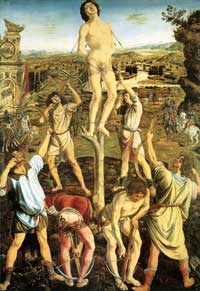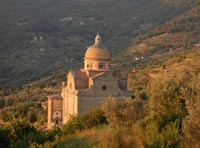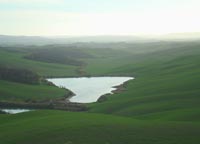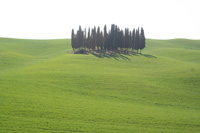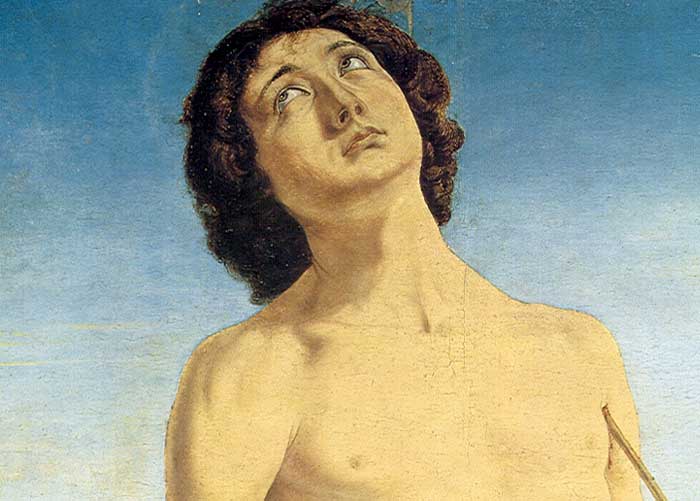 |
| Antonio del Pollaiuolo and Piero del Pollaiuolo, The Martyrdom of Saint Sebastian (detail), completed 1475, London, National Gallery |
Antonio del Pollaiuolo and Piero del Pollaiuolo | Martyrdom of Saint Sebastian |
| Antonio Pollaiuolo (ca. 1432-1498), Italian painter, sculptor, goldsmith, and engraver, was a master of anatomical rendering and excelled in action subjects, notably mythologies. This "most Florentine of artists" appealed especially to the circle of Lorenzo de' Medici.
|
| The Martyrdom of Saint Sebastian is composed symmetrically to tell the story taken from the 'Golden Legend' of Saint Sebastian who was sentenced to death on being discovered a Christian. He was bound to a stake and shot with arrows. Here, the six archers have three basic poses, turned through space and seen from different angles. This helps produce the three-dimensional solidity of each figure and together they define the foreground space. The Pollaiuolo brothers were sculptors, and may have made statuettes of the archers. The male nude is central to this picture and the figures - like the landscape - have been studied from life. A number of life drawings by the Pollaiuolo brothers have survived. The landscape takes about a third of the background of 'The Martyrdom of Saint Sebastian'. It is remarkable in its rendering of the glimmering river Arno and fading horizon. The tonal changes which occur over the receding landscape have been achieved by the use of oil paint. The painting was placed in an oratory, built by the Pucci family in the 1450s, in the key Florentine church of the Servite order, SS. Annunziata. The Pucci family were Florentine bankers and were on close terms with the Medici family. |
||
| The martyrdom of Saint Sebastian is one of the most enduring themes in Western religious art. The execution scene so often portrayed - with the Saint transfixed with arrows - is based on the legend about his life and death during the reign of the Roman emperor, Diocletian. However, it is the symbolic association of arrows with the Black Death - during the Middle Ages and during the Renaissance - which identifies Sebastian as the patron saint of plague victims. After more than four centuries of recurrent epidemics, the plague died out in Europe; but the image of St Sebastian continued to inspire artists until the end of the 19th century. Art in Tuscany | Martyrdom of Saint Sebastian |
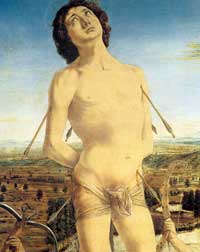 |
[1] Opera Antonii Pollaioli Florenttini: The Art of Anotonio Pollaiuolo, Suzanne Boorsch, Curator of Prints, Drawings, and Photographs, Yale University Art Gallery |
||||
|
||||
|
This article incorporates material from the Wikipedia article published under the GNU Free Documentation License.
|
||||
Holiday accomodation in Tuscany | Podere Santa Pia
|
||||
Podere Santa Pia |
Podere Santa Pia, garden view, April |
View from terrace with a stunning view over the Maremma and Montecristo |
||
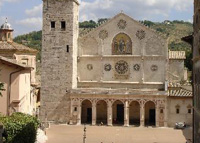 |
||||
The abbey of Sant'Antimo |
Cortona |
Spoleto, Duomo |
||
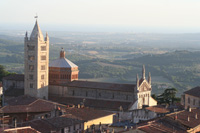 |
||||
Crete Senesi, surroundings of Podere Santa Pia |
Val d'Orcia" tra Montalcino Pienza e San Quirico d’Orcia. |
Massa Marittima |
||
| The city of Florence is virtually synonymous with the Renaissance in Italy. A list of significant Florentine artists through the time of Pollaiuolo includes Duccio, Giotto, Donatello, Ghiberti, Fra Angelico, Uccello, Luca della Robbia, Domenico Veneziano, Castagno, Masaccio, Alberti, Filipo Lippi, Antonio and Piero Pollaiuolo, Filippino Lippi, Botticelli, Ghirlandaio, and Verrocchio—as well as the great Leonardo and Michelangelo, and in the sixteenth century, Rosso, Francesco Salviati, Pontormo, and finally, Vasari, better known for his biographies of other artists than his own work. | ||||

